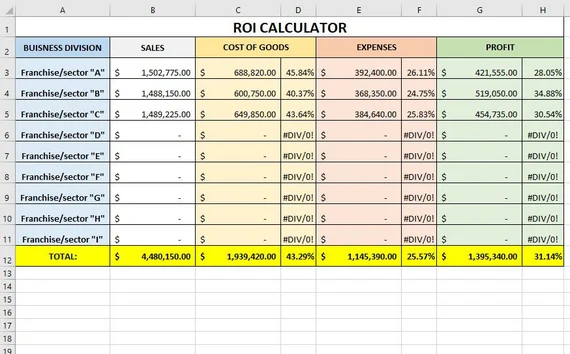
Installing APK files on Android devices can be a convenient way to access apps that may not be available on the Google Play Store. However, users often encounter various issues during the installation process that can be frustrating and time-consuming to resolve. Whether you’re a seasoned Android enthusiast or a beginner, understanding the common problems and their solutions can save you a lot of hassle. This guide will walk you through the most frequent APK installation issues and provide a step-by-step approach to troubleshoot them effectively. If you’re downloading apps from platforms like apkofc, these insights will help ensure smooth installations every time.
Understanding APK Files
Before diving into troubleshooting, it’s important to understand what APK files are. APK stands for Android Package Kit, the file format used by Android to distribute and install applications. When you download an app from the Play Store, you’re actually downloading and installing an APK in the background. When installing APKs manually from websites like apkofc, you’re taking that process into your own hands.
Common Reasons APK Installation Fails
There are several reasons why an APK might fail to install. Below are the most common:
Corrupted APK File
If the APK file is incomplete or corrupted, it won’t install properly. This can happen due to interrupted downloads or poor sources.
Incompatible Android Version
Some apps are built for specific Android versions. Trying to install an APK that isn’t compatible with your device’s version can result in installation errors.
Unknown Sources Not Enabled
By default, Android devices block installation from unknown sources for security reasons. You need to enable this manually to install APKs from outside the Play Store.
Conflicting App Versions
If an app is already installed on your device, and you’re trying to install a different version of it (especially from another source), it may conflict and cause issues.
Insufficient Storage Space
Lack of storage can also prevent successful installations. Android needs not only the space for the APK but also extra space to extract and install it.
Security or Play Protect Restrictions
Google Play Protect scans for potentially harmful apps. If it detects something suspicious in your APK, it might block the installation.
Step-by-Step Approach to Troubleshooting
Let’s explore a structured approach to solve the above issues.
Step 1: Verify the APK File
Always download your APKs from reliable sources such as apkofc. After downloading:
- Check the file size against the original listing.
- Try opening the file with a file manager to ensure it’s not corrupted.
- Avoid renaming APK files manually, as it might change their structure.
Step 2: Check Android Version Compatibility
Before installation:
- Go to Settings > About Phone > Android Version to find your OS version.
- Check the app’s requirements on its download page on apkofc.
- If your version is outdated, consider updating your device if possible.
Step 3: Enable Installation from Unknown Sources
To allow installation:
- Go to Settings > Apps & Notifications > Special App Access > Install Unknown Apps.
- Choose the browser or file manager you’re using.
- Enable the Allow from this source toggle.
Note that on older Android versions, this may be located under Security > Unknown Sources.
Step 4: Resolve App Conflicts
If the APK you’re installing is an updated or modified version of an existing app:
- Uninstall the currently installed version.
- Backup your data before uninstalling, especially if it’s an important app.
- After uninstalling, try installing the new APK again.
Step 5: Free Up Storage
If you receive an “Insufficient Storage” error:
- Go to Settings > Storage to check how much free space you have.
- Delete unused apps, media, or cache data.
- Use storage cleaner tools if needed.
Step 6: Disable Play Protect Temporarily
If Play Protect flags your APK:
- Go to Google Play Store > Profile Icon > Play Protect > Settings.
- Toggle off Scan apps with Play Protect.
- Install your APK, and re-enable Play Protect afterward.
Only disable this feature if you’re absolutely sure the APK is safe, especially when downloading from trusted sources like apkofc.
Step 7: Check for App Permissions and Settings
Sometimes, the app may require certain permissions to install:
- Check for prompts asking for permission during the installation process.
- Go to Settings > Apps > [App Name] > Permissions and grant necessary permissions.
Additional Tips to Avoid APK Installation Issues
Keep Your Device Updated
A more recent Android OS improves compatibility with modern APKs and reduces the risk of bugs during installation.
Use a Trusted File Manager
A good file manager helps in organizing downloads, checking file integrity, and initiating installations properly.
Use an Antivirus to Scan APKs
Before installing any file, scan it with a mobile antivirus tool to ensure it’s malware-free. This is especially important for APKs downloaded from third-party sites.
Avoid Modded or Cracked APKs
These often lead to problems because they are tampered with. Stick to original, verified apps available on trusted websites like apkofc.
Clear Package Installer Cache
Sometimes the system’s package installer gets clogged with data:
- Go to Settings > Apps > Show System Apps > Package Installer > Storage.
- Tap Clear Cache and Clear Data.
This can resolve persistent installation problems.
Final Thoughts
Installing APKs manually is a great way to access a wide variety of Android apps, especially those not available through conventional app stores. However, the process does come with its challenges. By understanding the most common reasons for installation failures and applying a methodical, step-by-step approach, you can resolve most issues with ease.

